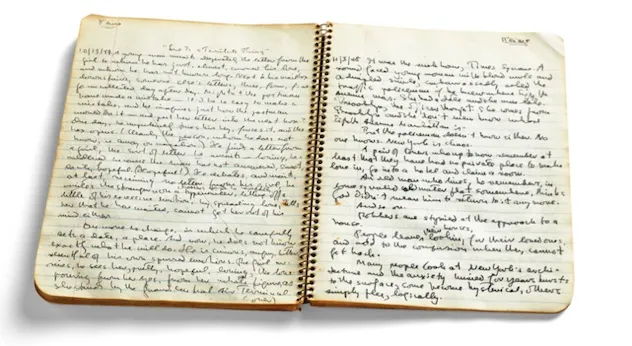I've been using a mixture of methods focused around 4 x 6" index cards for a while after having previously done a traditional bullet journal, Day-Timer, etc. and attempting to something similar in a variety of digital contexts including TiddlyWiki, Obsidian, Logseq, etc. (More details/discussion: https://www.reddit.com/r/bulletjournal/comments/15av66m/a_year_of_bullet_journaling_on_index_cards/) Somehow paper always seems to win out for the tactile nature and the decreased probability of things going lost (being out of sight and thus out of mind which happens for me in digital), or dealing with a never-ending list of overwhelming pop up reminders.
I've written a bit about the history of some of these methods, which includes links to some of the bigger examples of each if it helps to see some variety about what each system suggests or photos of them at work. One of the oldest methods from which most of the rest seem to stem is the Memindex from circa 1903.
My current go-to is a Memindex/bullet journal method adapted to index cards rather than a notebook. I've got a card every day for events and to do lists as well as cards for "Future", planned purchases/groceries, etc. I keep a top level card with short lists of what I want to read, watch, listen to, and learn. I also keep a sectioned Eisenhower matrix group of cards for the areas: crisis, productivity, distraction, and low priority. I also have a Projects section with descriptions and lists for each and based on priorities, I'll take individual steps from the project cards and place them onto my daily cards as I go.
Some of the bigger projects may have a top level card followed by cards which breakdown or outline parts of larger processes. I can then lay them out on a table (Gantt chart style) to determine dependencies and create a pseudo schedule. When I'm done, I'll clip them all together in the most appropriate order and number them. As necessary, I'll take some of these cards out and "schedule" them for individual days by placing them behind or attaching them to the appropriate daily cards with a paper clip. (If you do this, make sure the project name and a potential order number designator is on them, so that you can refile them with the project as necessary.)
The key is doing weekly and bigger monthly or quarterly reviews of all the major cards and moving/scheduling what you need to do from either old cards or project cards each week. Going through my entire collection of immediate cards is usually incredibly fast. When I'm done with cards, they get archived away in my card index for future consultation if necessary. I'm also usually making further notes on the cards as I go and cross indexing them, so that if I don't have the notes for a particular project in the project section, it's being written on the individual daily cards; at the end of the week I'll update the project cards and write down the dates of those notes into the project file so that if I need them later they're available (but importantly I don't have to copy over all the notes). After doing this it's usually pretty easy to work on planning the next steps for the coming week/month.
For lower priority projects and to do items, if things sit around too long undone they slowly move down the priority list from crisis to low priority or they slowly move to the back of my projects section where they get reviewed less often.
For those who prefer some visualization, here are two photos which may help in terms of the physical arrangement I'm using:
- https://boffosocko.com/wp-content/uploads/2023/09/wp-1693596706707-scaled.jpg (alt text: Display of two columns of index cards with only the titles on each showing. Column one: Planning Daily, Planning Weekly, Weeks 31-35 August 2023, Sept 02 2023, September 03 2023, Crisis: Urgent/Important, Productivity: Not Urgent/Important, Low Priority: Not Urgent/Not Important, Distraction: Urgent/Not Important, Someday. The second column: Project Priorities Spring 2023, Reading Priorities, Writing Priorities, Learning Priorities, Listening Priorities, Watching Priorities, Purchases Planning, Groceries.)
- https://boffosocko.com/wp-content/uploads/2023/09/wp-16935967219588251569559254031730-scaled.jpg (alt text: My card index for productivity featuring sections for an Eisenhower Matrix, Projects, and tabs for the upcoming 12 months and 31 days in the current month.)
On a day-to-day basis, I keep most of it in an Acrimet card file on my desk, though the longer term storage is in a nearby Singer Card File Cabinet. (I'll often have a full drawer removed from the big cabinet on my desk while I'm working on a particular section.) While travelling about, I store the most important daily use cards in a King Jim Flatty Works case which is about the size of a small notebook or which fits easily into my shoulder bag. If you're all-in on index cards and you need ideas for storage, I've been compiling a relatively comprehensive list of index card storage options.
Having done notebooks and other paper-based planners (Hobonichi) before, I appreciate that the cards are easily moveable and re-orderable, I don't waste any paper or space if I miss days, I'm not as precious about screwing up a new notebook, and I don't have to carry either multiple notebooks, or worry about recopying project pages from one notebook to the next when I'm done. I also don't have to worry about losing large parts of my planning if I lose a whole notebook. It's always easy to have today's card on me at all times or to take small sections on the road as needed. Additionally cards are very cheap. If you're of the sort of camp that having pre-laid out stationery with finer stock, perhaps try Notsu who pre-prints a variety of productivity cards, though only in 3 x 5 inch sizes. There are a few other smaller companies who still do this, but they tend toward the more expensive side.
There are many ways to do variations on these, so take a look at some examples of how others use them and then attempt to evolve a practice which works for you. For example, if having an Eisenhower Matrix section doesn't make sense to you, then drop that part and adopt what does work instead.
For those who are deep into this sort of rabbit hole, I'll also mention that I keep a separate zettelkasten "department" within my collection for notes related to reading/research. (I had to fill that massive Singer card index up with something besides extra wine storage.)
Syndication link: https://www.reddit.com/r/gtd/comments/15pfz8o/comment/jypt023/?utm_source=reddit&utm_medium=web2x&context=3

